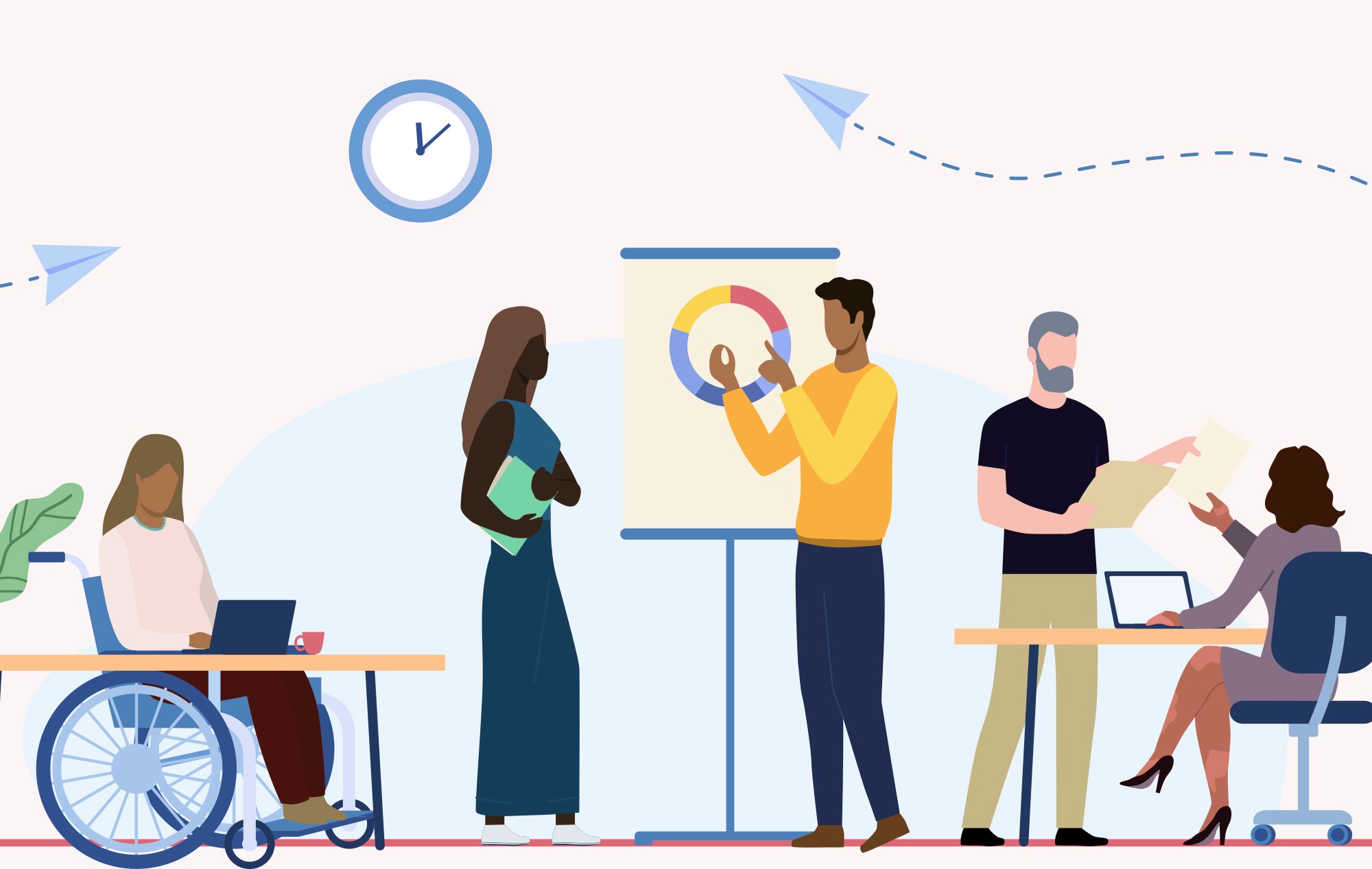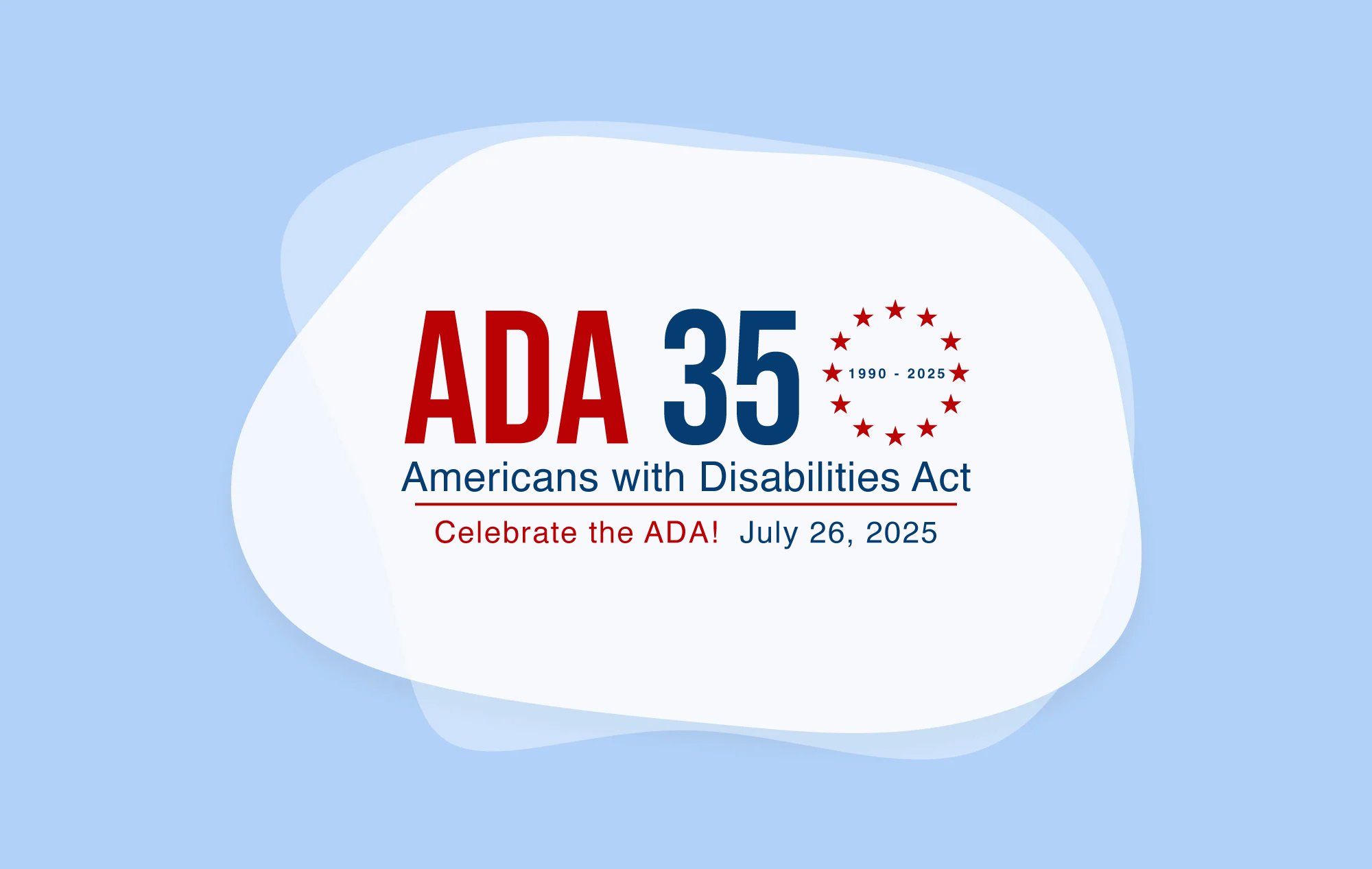One year after the world was upended by a deadly pandemic that halted economies and contributed to a prolonged period of inflation and economic uncertainty, people with disabilities actually saw employment figures, albeit low compared to the non-disabled population, tick up.
That more people attained work is no doubt a positive development for a community that has historically faced considerable barriers to employment and only enjoyed civil rights protections—which extend to the workplace—for three decades.According to data released by the U.S. Department of Labor’s Bureau of Labor Statistics (BLS) earlier this year, the number of people with disabilities who were employed in 2021 was 19.1 percent, up from 17.9 percent a year earlier.
At the same time, however, people with disabilities across all age groups and education levels are considerably less likely than their non-disabled counterparts to have a job. For those who aren’t disabled, nearly 64 percent did so in 2021—more than three times the rate of their disabled counterparts, according to the BLS analysis.
Dig deeper into the data and the employment disparities become even more pronounced. For example, those experiencing intersectional marginalization—such as people who are both disabled and come from historically disenfranchised communities—suffered from higher rates of joblessness.
Despite a modest spike in 2021, the low employment figures overall confirm what disabilities rights advocates have long contended: The barrier to entry is much more difficult for people with disabilities because of historical inequities, stigmas associated with physical and mental disabilities, and inaccessible work environments.
For decades, people without a disability have enjoyed much higher rates of employment despite changes to laws and policies meant to encourage and improve economic advancement for those with various forms of disabilities. It’s a stubborn problem that people in the United States and around the world continue to grapple with, and it’s why each October the world recognizes the vast contributions people with disabilities have made to society.
What started in the United States as National Disability Employment Awareness Month (NDEAM) has grown into a global campaign recognized simply as “DEAM.” It’s during this month that policymakers, disability rights advocates, employers, and government officials come together to highlight positive gains, but also find solutions to shatter such barriers.
While the BLS data likely doesn’t come as a surprise to many, anyone involved in boosting the labor market should use it as motivation to not only right historical wrongs but to tap into a significant percentage of the population that has the talent and desire to make a difference in society.
Improving Employment Opportunities for People With Disabilities
Charles Catherine is the director of corporate and government relations at the nonprofit National Organization on Disability (NOD), where he works with both the public and private sectors to improve employment opportunities for people with disabilities.
“We know that our community is both underemployed and when employed, underpaid,” Catherine, who has been blind since a teenager as a result of a genetic disease, tells InclusionHub.
Catherine’s point is supported by the BLS analysis looking back at 2021, which found that 29 percent of people with disabilities worked part-time, as opposed to 16 percent among those who aren’t disabled. It also noted that people with disabilities were less likely to serve in management or work in professional occupations, or to have completed a bachelor’s degree or higher.
“Across all levels of education in 2021,” the analysis said, “persons with a disability were much less likely to be employed than were their counterparts with no disability.”
Overall, about eight in 10 people with a disability were not in the labor force in 2021, compared to just three out of 10 people who aren’t disabled—a seismic gap. While BLS partly attributed the disparity to people 65 and older less likely to be in the workforce (when people age they’re more likely to have a disability), the levels of joblessness are nonetheless striking.
That’s why organizations such as NOD are so important.
Among the many services NOD offers is a free disability employment tracker—effectively a survey organizations use to track their inclusion journey. Once completed, the survey provides firms with recommendations to inform and improve accessibility practices.
The NOD also has a long history of advocating for disability rights on Capitol Hill and beyond. The organization, which was founded 40 years ago and has its roots in the movement that led to the passage of the Americans with Disabilities Act (ADA), has called for the removal of Section 14C of the Fair Labor Standards Act, which actually allows employers to pay disabled workers a “subminimum wage.”
“It’s something that should be phased out, should not even exist in the first place,” Catherine tells InclusionHub.
One of NOD’s top priorities, Catherine says, is to create an environment in which people with disabilities are comfortable making disclosures about their experiences in the workplace, whether through employee resource groups, mentoring programs, or by ensuring human resources professionals receive proper training and education.
“Because when you talk about disability inclusion, it's very complex,” he says, adding that the disability community itself is very diverse.
Another potential challenge for managers and HR professionals is the ADA itself, which is quite comprehensive. As a result, it’s possible that those in management positions may not be familiar with the law’s broad definition of “disability,” including which conditions are covered.
“And [the] same is true for a conversation on mental health,” says Catherine. “There's a lot of people, especially with COVID, that now are coming forward and saying, ‘I struggle with mental health disabilities, depression, anxiety, etc.’ And so we want to help move this conversation forward.”
Improving Employment for Marginalized Groups
Moving forward also means better understanding how various groups are impacted by non-inclusionary labor practices and identifying sustainable solutions.
In recognition of DEAM, the Women’s Bureau, another arm of the Department of Labor, held a webinar on Oct. 27 titled, “Women with Disabilities: Barriers and Bias in the Workplace.”
According to BLS data, because women have a longer life expectancy than men they are more likely to have a disability. At the same time, women with disabilities have historically experienced the highest rates of mental illness, Anupa Iyer Geevarghese, who serves as chief of staff at DOL’s Office of Disability Employment Program (ODEP), explained during the October webinar.
“As a woman of color with a disability,” she said, “I can attest to how important it is for us to have these conversations.”
Dr. Sarah Jane Glynn, a senior advisor at the Women’s Bureau, said the month-long commemoration of the disability community is especially important considering the long history of discrimination experienced by marginalized groups.
“Employers could refuse to hire someone simply because they were disabled, stores could turn away paying customers,” she explained, adding, “America was not built for all of us.”
The establishment of NDEAM in 1945 by President Truman and the passage of the ADA 45 years later helped pave the way for necessary changes, which we’re still building upon today.
While the ADA not only transformed lives in the United States and globally by inspiring similar laws in 180 other nations, “we still have a very long way to go,” Glynn acknowledged.
That’s especially true when it comes to ensuring people from historically marginalized communities have better access to employment and resources.
ODEP’s Iyer Geevarghese said during the webinar that the employment disparity is “even greater for people with disabilities from historically marginalized communities.”
If the situation wasn’t concerning enough, people with disabilities were among the hardest hit by widespread layoffs at the beginning of the coronavirus pandemic in the spring of 2020, and took longer to return to work.
“There are sobering facts,” she said, “and that’s why we want to help people get back to work.”
Ariel Simms, president and CEO of RespectAbility, a disability-led nonprofit, said during the event that making meaningful change needs to be a “‘Nothing About Us Without Us’ solution.”
“Meaning: We need to work with those with disabilities” to make sure they are the ones giving insights into challenges and helping define solutions, Simms said.
And, Simms added: “Pay them for that expertise.”
- With Daine Taylor
InclusionHub is an online resource directory with information on digital accessibility, assistive technology, diversity and inclusion, and other important topics. Explore the comprehensive database to learn more about resources available to your team.






Leave a Comment